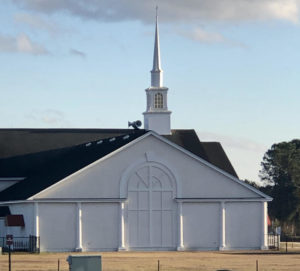How are Churches Financed?
Church financing comes from a variety of sources, including donations, facility fees, trusts, grants, and loans.
How Do Churches Get Their Money?
Across almost all denominations, most churches get their funding through congregational donations through offerings, pledges, donations and dues. For most mainstream congregations, the second biggest source of income is trust funds, investments and bequests, which can amount for as much as 50% of their income, depending on the denomination, size, and age of the congregation.
However, many churches particularly those with large, beautiful or otherwise attractive facilities–can make a substantial amount of income in charges for building use (such as for receptions, weddings, concerts, etc).
According to one study in 2011, individual donations made up 84% of Catholic churches’ income, 90% of mainline Protestant churches, and 97% of conservative Protestant churches.

However, for large purchases, and especially for independent congregations, the decision to finance a church building is a big one. Knowing that such a large portion of your income comes from individual donations, and knowing that those donations fluctuate with the economy (and are subject to downturns such as the Covid-19 pandemic), it can be hard to be able to make forecasts and plan for the future. So the question is: how do you finance a church building?
How To Finance a Church Building
When looking at financing for new construction, remodeling, or refinancing, a church can typically turn to three types of loans: a short-term mortgage, a long-term mortgage, and an unsecured church loan. As your church numbers increase, it can become apparent that you’ve outgrown your building and that you need to make changes, either moving to a new building or making an addition to the building you’ve already got. There are also other reasons to expand, including adding a church school, adding a gymnasium, or buying adjacent property for parking or green space.
The process that you want to follow when applying for financing a church building is similar to what you would do for financing a small business, but there are a few different considerations (as well as regulations).
To begin with, you want to find out how much money you need to borrow. This may sound simple, but there is a lot that goes into it. You need more than just a ballpark figure: you need a sound business plan that takes the project from start to finish, including purchase of land, demolition, construction (interior and exterior), as well as the soft costs, such as architect’s fees, engineering fees, permits, and many other small fees that begin to add up quickly.
When you have a solid number defined for what you need, you must begin the process of starting the paperwork; you have to be able to prove to the lender that you’ll be able to pay back the money that they’re going to be lending you. This will include three to five years of profit and loss statements, and, depending on the size of your church and the size of your expansion and financing, more detailed financial paperwork. Lenders like to be able to mitigate risk, so the more you can show them that you are less of a risk, the more likely you are to get a loan with favorable rates.
What Can You Expect When You’re Seeking Church Financing?
There are many things that a lender will be looking for when they’re deciding on whether to finance you. The first is how long your church has been in operation. Some lenders have hard-and-fast rules, typically three years, but those can vary based on the income and size of the church. A lender wants to see that your church is a solid organization and not a flash in the pan that will disappear taking their investment with them.
How much can you borrow? This number can also vary depending on circumstances, but a good rule of thumb is that a church can borrow between four and six times its annual income. When you’re determining income, there are certain expenses that you can add back into income for purposes of this calculation. For example, if you recently repaved your parking lot, then that expense would be added back into the income because it was a one-time improvement. The same goes with purchasing a new air conditioner, or hymn books. Expenses that wouldn’t go back into the income would recurring expenses such as salaries, ongoing ministry expenses such as missionary work, and taxes.
The lender will look at your Debt to Income Ratio (DTI). This is determined by taking your debt divided by your income. The golden number is around 40-42%. So, if you have annual debt payments of $42,000 then your income must be $100,000. (This calculation is why we looked at one-time expenses above to see if the expenses will apply to every year.)
Types of Church Loans
There are typically two different types of church loans: mortgages and unsecured church loans. Mortgages can be broken down into two types: short-term and long-term. A long-term mortgage has a fixed rate for a long period of time, which keeps monthly payments lower, but which will cost you more in the long run (because you will be paying more in interest). A short-term mortgage has a variable interest rate that depends on national rates. This leads to payments which are more erratic it’s not a set payment for the life of the loan but you can pay the loan off more quickly and typically for less money.
The second type of church loan is an unsecured church loan. These loans are smaller, and generally used for improvements and renovations, such as replacing an air conditioner, fixing an organ, or replacing pews. (Unsecured means that the lender does not take collateral, such as real estate).
